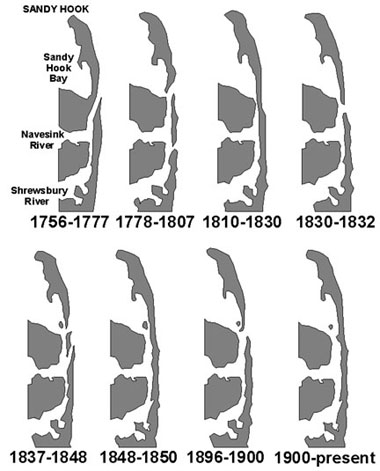The Physical Environment
Shoreline sand movement
The wind and the sea are constantly moving the sand you see on the beach. Sand is deposited on the beach by waves with a weak backwash.
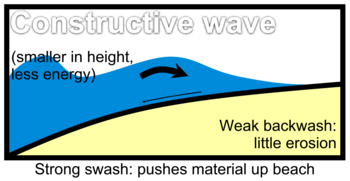
The material brought onto the beach either comes from the sandy bottom under the water or from other areas of the beach. A strong backwash has the opposite effect. A destructive wave pulls sand from the beach into the water.
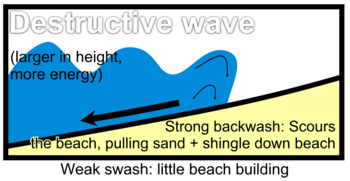
When the tide is delivering a lot of high energy waves that are striking the beach at an angle this can cause longshore drift. This moves sand along the length of the beach. A prevailing seasonal wind that consistently blows in one direction can cause sand to steadily migrate down a beach.
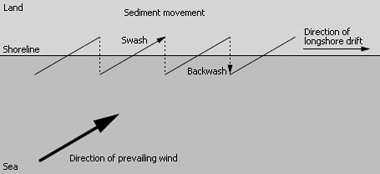
This can be noticeable when sand is taken away from some parts of a beach and added to other areas. This directional movement of sand will often reverse itself when the prevailing winds of another season cause longshore drift in the opposite direction.
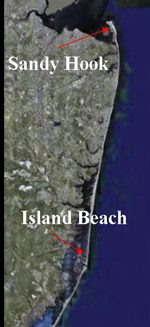
Northward longshore movement helps build and maintain Sandy Hook while southward longshore drift is important for building the beaches on New Jersey 's barrier islands. The natural flux of sand off of and onto the beach at Island Beach is relatively balanced over the course of the year. This makes intuitive sense if you have been able to visit Island Beach over the course of a few years. You do not find that the beach has entirely disappeared or discover that it has grown massively wider. There may be some seasonal or year to year differences but overall the beach remains about the same size.
Most people are unaware of the differences between a weak and strong swash, don't notice that the waves sometimes crash onto the shore at an angle, or have any idea that longshore drift could be moving sand down the beach. Even so, if you enjoy swimming in the ocean you probably are familiar with one example of how strong the tide can be when it pushes things around. Some days when go swimming the water will strongly push you in a direction parallel to the shoreline. When this occurs it can take a lot of effort to remain swimming in front of the same part of the beach where you first entered the water (the place where your towel and perhaps your family are sitting). This energy that drives you down the beach can also fuel longshore drift.
Natural movements of sand can be influenced by human activities. Placing jetties into the sea, destroying dune vegetation, and building structures on and along the back edge of the beach all influence the give and take of how sand enters and leaves a beach, a dune, or a barrier island. Eroding shorelines have been a problem in many areas where humans have built homes and other structures along the beach. In some cases this erosion is in part caused by human disturbance. In other cases the erosion is simply caused by the dynamic nature of a shoreline that is in a constant state of drifting and changing.


